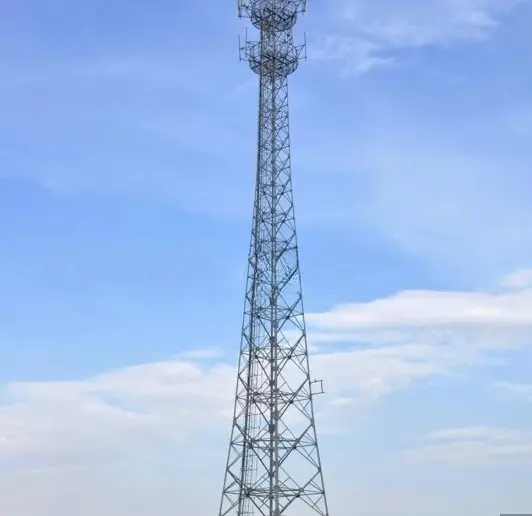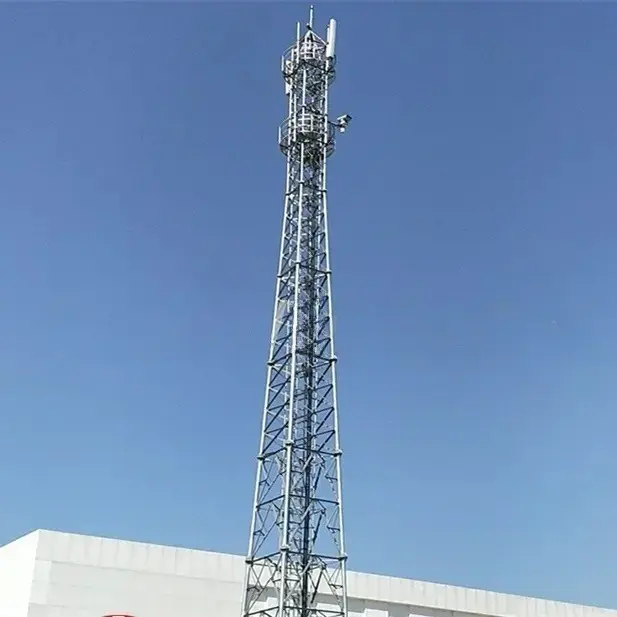Contatc
What Is 4 Legged Telecommunication Tower?
2024-08-15
In the world of telecommunications, towers are integral components of the infrastructure that enables wireless communication systems. These towers come in various shapes, sizes, and designs, depending on the needs of the network they serve. One of the most common and durable designs is the 4-legged telecommunication tower. This type of tower is widely used in the industry due to its structural stability, cost-effectiveness, and versatility. In this blog, we will explore the design, features, advantages, applications, and construction of 4-legged telecommunication towers.


1. Understanding Telecommunication Towers
Telecommunication towers, sometimes called cell towers or communication towers, are tall structures designed to support communication equipment, such as antennas, microwave dishes, and transmitters. These towers are crucial for facilitating wireless communication, such as mobile phone networks, radio broadcasting, television transmission, satellite communication, and internet services.
Telecommunication towers can be made from various materials, including steel, concrete, or aluminum. The design of these towers must take into consideration a variety of factors such as the load-bearing capacity, wind resistance, and the height necessary to transmit signals over a large area.
2. What is a 4-Legged Telecommunication Tower?
A 4-legged telecommunication tower is a specific type of communication tower that is supported by four vertical legs or columns, which form the base of the structure. These towers are typically constructed using steel or other high-strength materials, and they are designed to support antennas and other communication equipment at significant heights.
The main characteristic of a 4-legged tower is its four-legged base, which gives the structure a broad, stable foundation. This configuration enhances the tower’s ability to withstand external forces such as wind, earthquakes, and other environmental pressures. The four legs are generally placed at equal distances from each other to form a square or rectangular base, depending on the design requirements.
4-legged telecommunication towers are commonly used in both urban and rural settings, and their design is particularly suitable for locations where stability, durability, and high capacity are essential. They are often used for medium to large communication projects, including cellular networks, radio broadcasting stations, and television transmission towers.
3. Design Features of 4-Legged Telecommunication Towers
The design of a 4-legged telecommunication tower is carefully planned to ensure structural integrity and functionality. Some key design features of these towers include:
a) Tower Height
The height of a 4-legged telecommunication tower depends on the intended purpose. For cellular networks, these towers may range from 30 meters to 150 meters in height, allowing them to cover a wide area and transmit signals effectively. The height is crucial for increasing the range of signal coverage and minimizing interference from other structures.
b) Legs and Structural Support
The four legs provide the primary support for the tower and are generally arranged in a triangular or square configuration. These legs are typically made from high-strength steel to ensure they can bear the weight of the equipment mounted on the tower and withstand the external forces exerted by wind, weather conditions, and seismic activity. The legs are connected to each other by horizontal members, called bracing, which adds rigidity and stability to the structure.
c) Material Composition
4-legged telecommunication towers are predominantly made of steel due to its strength, durability, and ability to withstand harsh environmental conditions. Steel also provides the flexibility needed for the tower to handle dynamic loads and vibrations. Additionally, steel towers are resistant to corrosion, especially when treated with appropriate coatings or galvanization processes to protect the material from rust.
d) Antenna and Equipment Mounting
The upper part of the tower is designed to hold communication equipment such as antennas, transmitters, and microwave dishes. These are mounted on platforms or mast sections that are affixed to the tower. The platform is carefully engineered to support the weight and ensure the equipment is positioned optimally to transmit signals.
e) Grounding System
A robust grounding system is an essential component of any telecommunication tower. It protects the tower and the equipment from electrical surges, particularly during lightning storms. The grounding system connects the tower to the earth, directing the electrical energy from lightning or other electrical surges into the ground safely.
4. Advantages of 4-Legged Telecommunication Towers
4-legged telecommunication towers offer numerous benefits, making them a popular choice for a wide range of communication applications. Some of the key advantages of these towers include:
a) Stability and Strength
The four-legged design provides superior stability compared to other types of communication towers. The four legs distribute the tower’s load evenly, allowing it to withstand high winds, extreme weather conditions, and other environmental stresses. This stability is particularly important in areas prone to hurricanes, tornadoes, or earthquakes.
b) High Load-Bearing Capacity
4-legged towers have a higher load-bearing capacity, making them ideal for supporting multiple communication devices. The design can accommodate large antennas, microwave dishes, and other heavy equipment, making it suitable for high-capacity communication networks. This capability is essential for areas with dense population centers where high data and voice traffic are expected.
c) Durability and Longevity
Steel 4-legged telecommunication towers are durable and long-lasting. They can endure the wear and tear of the environment for several decades with minimal maintenance. In areas where corrosive elements like saltwater or chemicals are present, these towers are often treated with galvanization or coated to prevent rust and deterioration.
d) Cost-Effective
While the construction costs for a 4-legged tower may be higher than for smaller towers, they provide a cost-effective solution in the long term due to their high capacity and durability. Their robust design ensures that maintenance and repairs are minimal, making them an economically efficient choice for large-scale communication networks.
e) Scalability and Flexibility
4-legged towers are flexible in terms of scalability. They can easily be adapted to accommodate additional equipment or antennas as communication networks grow. This makes them an ideal option for expanding or upgrading existing infrastructure, ensuring the system can meet future demands.
5. Applications of 4-Legged Telecommunication Towers
4-legged telecommunication towers have a broad range of applications in different sectors. Some common use cases include:
a) Cellular Networks
Telecommunication companies often use 4-legged towers to provide cellular network coverage in urban, suburban, and rural areas. These towers ensure that mobile phone users have reliable access to voice, text, and data services.
b) Radio and Television Broadcasts
Broadcast stations utilize 4-legged towers to transmit radio and television signals over large distances. These towers are designed to support the heavy broadcast equipment needed to send signals to a wide audience.
c) Microwave Transmission
Microwave transmission towers are used in point-to-point communication systems, such as satellite communication and data relays. These towers support large microwave dishes that transmit data between different locations, allowing for high-speed communication across long distances.
d) Emergency Services and Military Communication
4-legged telecommunication towers are essential for emergency services, ensuring reliable communication during crises. These towers are also used by the military to facilitate secure communication in remote areas or during operations.
6. Conclusion
4-legged telecommunication towers are a cornerstone of modern communication networks. Their stability, durability, and load-bearing capacity make them an ideal choice for a variety of applications, from mobile phone networks to radio and television broadcasting. The design of these towers, with their four-legged base and steel construction, provides the necessary support to handle heavy equipment and withstand environmental forces. As communication needs continue to grow, the importance of robust and reliable telecommunication towers, like the 4-legged variety, will only increase, ensuring seamless connectivity across the globe.

Hey, I’m Chunjian Shu
"X.Y. Tower: Reliable, innovative solutions for high-quality towers and electrical equipment with professional service.
